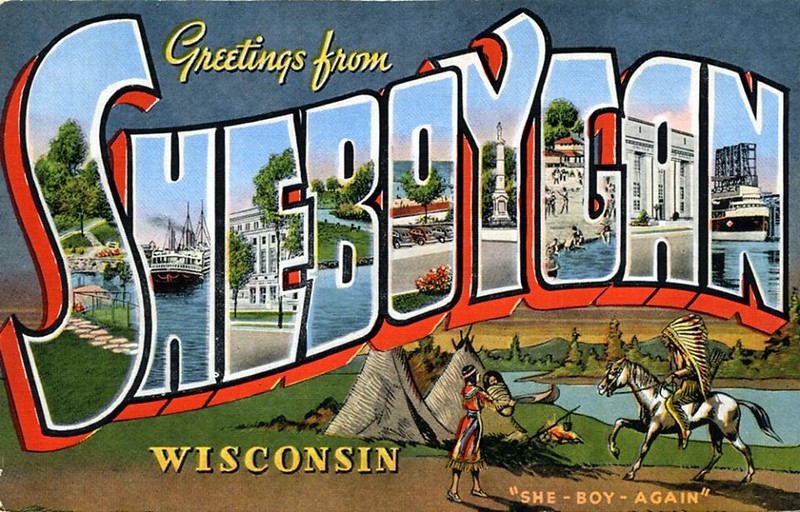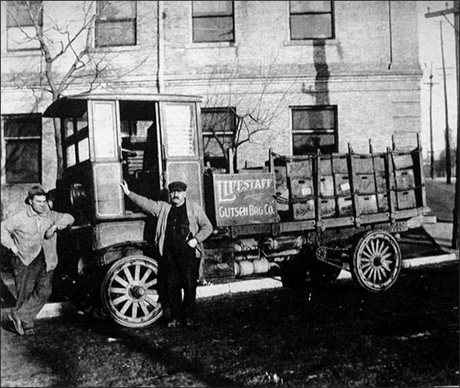It’s been said that when you buy something, the price is what you pay and value is what you get. But if you want to get people’s attention, charge an astonishingly high price for something. Case in point, ever since Bloomberg News on Friday did a story about Carlsberg’s new $400-per-bottle beer, touting it as the world’s most expensive, it’s been burning up the blogosphere, online news outlets and forums. And with good reason. There’s a lot not to like about this story, and very little to suggest the $400 price tag is anywhere near reasonable, as many, many have already pointed out, from A Good Beer Blog’s Are You An Utter Fool? to Beer Advocate’s forum responding to the question, Are massively expensive beers good for the craft brew world?
What I find curious about this new beer is that, as far as I can tell, Carlsberg is almost completely silent about it. There’s nothing about it on their website, nothing under media or press releases. Wouldn’t you expect at least some PR information on the supposed release of something called the world’s most expensive beer? But all of the press this has gotten seems to be coming from a single source, the Bloomberg piece, which even more oddly appears to be aimed at the Latin American market.
The beer itself may be called Carlsberg Vintage No. 1, and all we know about it is that it’s 10.5% abv and “contains hints of prune, caramel, vanilla and oak tree from the French and Swedish wooden casks in which it [was] stored. It has a chestnut brown color, little foam and goes well with cheeses and desserts.” That’s according to Jens Eiken, the brewer at the Jacobsen Brewhouse (the small boutique brewery housed in the Visitor’s Center), who created the beer. Given that it’s so expensive, he’s surprisingly tight-lipped about giving any details that might convince one that it’s worth that hefty price tag. He says it’s relatively cheap, “considering the amount of time the brewery spent developing it.” Naturally he’s not saying how long that was, but does add “[w]e’re trying to raise the bar for what a beer can be,” which is maddeningly infuriating since he refuses to say how or to where he thinks this beer has moved the “bar” to.
But unlike other efforts to “raise the bar” where the process and rationale for a higher price tag have been spelled out somewhat convincingly, making beer of great value doesn’t appear to be the point one iota. Price appears to be the driving factor, which at least explains the lack of persuasion or transparency. The $400 price is a conversion from the price in Danish kroners, which is 2,008 — a figure arrived at simply to coincide with the year. Next year, the price will go up to 2009 kroners and 2010 the year after that. The 600 bottles initially being sold in three high-end Copenhagen restaurants aren’t even very large. Each bottle is only 37.5 centiliters, which at 12.68 ounces is just north of our standard beer bottle.
The beer was created for no better reason than to “challenge luxury wines in the gourmet restaurant market and capitalize on rising individual wealth.” You can see the visible hand of marketing in every step of this project. Maybe I’m old-fashioned, but I think the way to challenge wine’s perceived supremacy is to make beers that rival the quality of fine wines, not arbitrarily price them as if they did. Frankly, I think one of the best selling points of better beer is precisely that in many cases it really does already rival that of fine wine, and does so at a spectacularly more reasonable price and one which bears some relation to the ingredients and process of manufacture. In other words, it’s a good value. Even Utopias, at $100 or more, because we know what’s involved and how it was made doesn’t seem too out of whack. Carlsberg Vintage No. 1 on the other hand? Whack job, all the way.
Beyond that, look at the tortured way they arrived at the title “world’s most expensive.” From the Bloomberg news article:
And according to The Longest List of the Longest Stuff at the Longest Domain Name at Long Last:
But while I don’t think an accidental over-charging can be more than a footnote in this discussion, reducing it to the price per ounce, liter, or whatever measurement doesn’t really work either. The Bon Secours is still the most expensive bottle, no matter how large it is. I guess if your goal is to have the most expensive anything, and you’re a large enough company, you’ll figure out a way to make that happen. |
Is it enough that there are only 600 bottles (50 cases at 12 per or 25 cases at 24 per) to justify the price? Certainly supply and demand is a time-honored economic method of determining fair market value. But in this case while the supply is indeed low, the actual demand is non-existent, completely artificial and will have to be manufactured from scratch.
You have to wonder about what they’re not telling us, because a 10.5% beer that’s been aged on wood is not exactly newsworthy. I can find any number of beers similar to that description. There are entire beer festivals here in the U.S. devoted to wood-aged beers. I judged at the Bistro’s Barrel-aged Beer Festival in my own backyard last year and had at least a dozen beers fitting the description of Vintage No. 1, without having to travel to Denmark. So what could be so different about this one to not only justify the cost but also their claim that even at this price they’re losing money. If I wanted people to plunk down a previously unheard of amount for something I made, I’d go out of my way to justify that high price.
But I think the difference between Vintage No. 1 and other high-priced beers, like Deus, Vielle Bon Secours and Boston Beer’s Utopias is the following. I’ve talked to Jim Koch about his Utopias, their earlier Millennium Beer and even the Triple Bock they made in the 1990s. All of those beers are or were relatively expensive beers. But the fact of their high price was at best a secondary consideration, a factor of the cost or making them. Vintage No. 1, from what little we know about it, was just the opposite. The price was created first, as a marketing gimmick (being the same as the year), and specifically to fill a demand by the nouveau riche for something expensive to spend their money on. Jim Koch, on the other hand, at least was truly passionate about the beer he and his team of brewers had made. Love it or hate it — and I’m in the former camp — you have to admit Utopias really does push the boundary of what beer is and can be. Can the same be said of a 10.5% beer aged on wood, without knowing anything more about how it was made? |
To give my take on the question of whether or not expensive beer is good for the craft beer industry, I think in general it can be. I think that for the most part the price of beer has been kept artificially low for too long and has helped to maintain the image of beer as a cheap, mass-produced commodity not worthy of respect. There is something to the idea of charging a higher price for something giving it more perceived value by that fact alone. Though I think it’s gotten out of hand, wine has been using perceived value for years instead of a cost of goods to mark-up ratio to come up with a fair market price. Beer, especially among the big breweries, works on volume sales rather than a high mark-up per bottle or per package. And to keep volume up, the big breweries have kept their prices low even as their cost of manufacture and for ingredients has steadily risen. This has also forced craft brewers to likewise keep their profit margins thinner, which has had the effect of keeping perceived value lower, too. Now that there are shortages to both hops and malt, that will have to change and it will be interesting to see how consumers react. I think as long as they perceive that for the price they’re still getting a good value, things shouldn’t be too bad.
That’s where I think Carlsberg’s Vintage No. 1 goes off the rails. There’s just no sense that there’s any reasonable value for the exorbitant price they’re asking. I’m sure there will be someone willing to buy it just to show off or impress others with their success. After all, there’s never been a shortage of fools with more money than sense. That doesn’t justify the price, of course, and in this case the utter lack of perceived value could indeed damage the cause of making fine beer more highly prized and priced. I’d pay almost any reasonable price for something I highly value. But I place almost no value in being tricked into paying ten times (or more) for something just because someone thinks they can get away with it.
UPDATE 1.29: I’ve found a bit more about what the bottle will look like. “Each bottle is labeled with a hand stenciled original lithographic print by Danish artist Frans Kannike, making the empties worth about $100 apiece.”



